The effects model is an idea within the media category - this helps to present the consumption of texts.
Imitation: this is the idea that the audience passively take in what the media is presenting to them; they therefore copy this and it suddenly becomes "normal".
Desensitisation: An example of this is on-screen violence; the audience no longer have the desired effect that they should as they have become used to what they have seen through the media.
Catharsis: An example of this would be the programme 'eastenders'; watching this may make viewers feel better about their own lives - they are watching the media as an escape.
Thursday 24 October 2013
Audience theory
Media texts are always aimed at a specific audience - this can be decided by;
Secondary: Doing something else at the same time. Not directly engaging with it, other distractions possible - for example; listening to the radio yet doing chores at the same time.
Tertiary: Still engaged with the media but on a subconscious level; you know something is there but you are not concentrating on it - this is also known as passive audience.
In my opinion, I believe audience do engage with the media but in different ways, and the media does indeed effect its audience. A soap opera such as Eastenders is a good example of a type of media which effects its audience. It makes the audience feel better about their lives - I see this as a good type of media which is a controversial opinion. Most people would find media programmes such as Eastenders as a popular soap, effects the way in which the audience are effected by the media.
Secondary: Doing something else at the same time. Not directly engaging with it, other distractions possible - for example; listening to the radio yet doing chores at the same time.
Tertiary: Still engaged with the media but on a subconscious level; you know something is there but you are not concentrating on it - this is also known as passive audience.
In my opinion, I believe audience do engage with the media but in different ways, and the media does indeed effect its audience. A soap opera such as Eastenders is a good example of a type of media which effects its audience. It makes the audience feel better about their lives - I see this as a good type of media which is a controversial opinion. Most people would find media programmes such as Eastenders as a popular soap, effects the way in which the audience are effected by the media.
Tertiary: Still engaged with the media but on a subconscious level; you know something is there but you are not concentrating on it - this is also known as passive audience.
In my opinion, I believe audience do engage with the media but in different ways, and the media does indeed effect its audience. A soap opera such as Eastenders is a good example of a type of media which effects its audience. It makes the audience feel better about their lives - I see this as a good type of media which is a controversial opinion. Most people would find media programmes such as Eastenders as a popular soap, effects the way in which the audience are effected by the media.
In my opinion, I believe audience do engage with the media but in different ways, and the media does indeed effect its audience. A soap opera such as Eastenders is a good example of a type of media which effects its audience. It makes the audience feel better about their lives - I see this as a good type of media which is a controversial opinion. Most people would find media programmes such as Eastenders as a popular soap, effects the way in which the audience are effected by the media.
- age
- gender
- class
- experience
- religion
- race / ethnicity / cultural background
- disability
- hobbies/interests
Secondary: Doing something else at the same time. Not directly engaging with it, other distractions possible - for example; listening to the radio yet doing chores at the same time.
Tertiary: Still engaged with the media but on a subconscious level; you know something is there but you are not concentrating on it - this is also known as passive audience.
In my opinion, I believe audience do engage with the media but in different ways, and the media does indeed effect its audience. A soap opera such as Eastenders is a good example of a type of media which effects its audience. It makes the audience feel better about their lives - I see this as a good type of media which is a controversial opinion. Most people would find media programmes such as Eastenders as a popular soap, effects the way in which the audience are effected by the media.
Secondary: Doing something else at the same time. Not directly engaging with it, other distractions possible - for example; listening to the radio yet doing chores at the same time.
Tertiary: Still engaged with the media but on a subconscious level; you know something is there but you are not concentrating on it - this is also known as passive audience.
In my opinion, I believe audience do engage with the media but in different ways, and the media does indeed effect its audience. A soap opera such as Eastenders is a good example of a type of media which effects its audience. It makes the audience feel better about their lives - I see this as a good type of media which is a controversial opinion. Most people would find media programmes such as Eastenders as a popular soap, effects the way in which the audience are effected by the media.
Tertiary: Still engaged with the media but on a subconscious level; you know something is there but you are not concentrating on it - this is also known as passive audience.
In my opinion, I believe audience do engage with the media but in different ways, and the media does indeed effect its audience. A soap opera such as Eastenders is a good example of a type of media which effects its audience. It makes the audience feel better about their lives - I see this as a good type of media which is a controversial opinion. Most people would find media programmes such as Eastenders as a popular soap, effects the way in which the audience are effected by the media.
In my opinion, I believe audience do engage with the media but in different ways, and the media does indeed effect its audience. A soap opera such as Eastenders is a good example of a type of media which effects its audience. It makes the audience feel better about their lives - I see this as a good type of media which is a controversial opinion. Most people would find media programmes such as Eastenders as a popular soap, effects the way in which the audience are effected by the media.
1. the effect model or hypodermic syringe
2. the uses and gratifications model
3. the reception model
the three theories above give us more of an understanding about audience and text.
Primary: This is the same as an active audience. This is engaging directly with the media consciously - for example; putting the radio on and listening to it.
Primary: This is the same as an active audience. This is engaging directly with the media consciously - for example; putting the radio on and listening to it.
Tuesday 22 October 2013
Sound
Post production sound id the sound that is added to the film after it has been created.
Parallel sound - this is when the music and sounds you hear match what you can see on the screen, it is what you expect.
Contrapuntal sound - this is when the music and sounds oppose what we see on the screen, this is unexpected and shocking.
Sound bridge - a sound bridge is when a piece of music/a sound carries on from one scene to another and links the scenes together.
Ambient sound - this is sound that you expect to hear from a certain location for example traffic, the beeping of horns etc.
Foley sound - everyday sounds that are added to a clip foe example bird noises or extra emphasized punch noises during a fight scene.

We analysed this film, the sounds in the film and how it created tension.
Parallel sound is used throughout the clip we saw, the sound fitted in with the clip and what we expected, the noises coming from cars and the engines being revved. The up beat and fast pace music added to the tension and would put the audience on the edge of their seats. Although because of the lack of sound at some points during the clip contrapuntal sound was used - the sirens from the police cars were cut out at some point to show they are not important and they are inferior to the other characters. This is to also show that they have lost their control. Ambient sound was also used when you could hear the tires screeching when they drove around the corners, this emphasizes the dramatic effect that it has, the noises were loud and obvious, this created tension. Also the skidding around the corners again showed the lack of control. Foley sound was also added, when they were driving, when the characters changed gear it was not natural and was made more obvious to add effect and to show emphasis on the speed, again showing the lack of control. A sound bridge is also used, the sound of the helicopter. You could hear the helicopter in the background when you couldn't even see it and then could still hear it when it was shown (carrying it on from scene to scene), this shows their superiority and their importance, it shows how serious it is and highlight the drama and the tension.

We analysed this film, the sounds in the film and how it created tension.
Parallel sound is used throughout the clip we saw, the sound fitted in with the clip and what we expected, the noises coming from cars and the engines being revved. The up beat and fast pace music added to the tension and would put the audience on the edge of their seats. Although because of the lack of sound at some points during the clip contrapuntal sound was used - the sirens from the police cars were cut out at some point to show they are not important and they are inferior to the other characters. This is to also show that they have lost their control. Ambient sound was also used when you could hear the tires screeching when they drove around the corners, this emphasizes the dramatic effect that it has, the noises were loud and obvious, this created tension. Also the skidding around the corners again showed the lack of control. Foley sound was also added, when they were driving, when the characters changed gear it was not natural and was made more obvious to add effect and to show emphasis on the speed, again showing the lack of control. A sound bridge is also used, the sound of the helicopter. You could hear the helicopter in the background when you couldn't even see it and then could still hear it when it was shown (carrying it on from scene to scene), this shows their superiority and their importance, it shows how serious it is and highlight the drama and the tension.
Monday 21 October 2013
Signs around school
As a part of our homework, we were asked to look around the school and see what pieces of media had been used to portray messages to staff/students and visitors of the school
The main messages were based around
The main messages were based around
- bullying
- racism
- respect for the school
- colds/ flu
- smoking
- litter
- equality
This media is used to improve the environment of the school and improve the school in general for the benefit of students and staff. Most signs are positive/ convey positive messages.

Again our main message around the school was respect - equality.
Instructive language is also used for a lot of the messages and signs that are posted around the school, for example, one that is used a lot as it is the school motto - "Success is an Attitude." - these short and blunt messages are simplistic but grabs the attention of people walking past.
Overall, the messages the school are placing around are conveying statements and asking students/staff questions throughout their day, this links to productive learning,it motivates the students as well as questioning them. They are subconsciously asking the students questions and giving them something to think about throughout their day at school - improving their attitude towards learning and towards others.

Instructive language is also used for a lot of the messages and signs that are posted around the school, for example, one that is used a lot as it is the school motto - "Success is an Attitude." - these short and blunt messages are simplistic but grabs the attention of people walking past.
Overall, the messages the school are placing around are conveying statements and asking students/staff questions throughout their day, this links to productive learning,it motivates the students as well as questioning them. They are subconsciously asking the students questions and giving them something to think about throughout their day at school - improving their attitude towards learning and towards others.
Friday 18 October 2013
Links - key concepts
Put into groups, we pieced together everything we had leaned throughout AS media studies so far and we has to present it on an A2 piece of paper, my group came to the conclusion that everything links together and that you couldn't separate AS media studies into sections because everything is a part of everything else.

We soon realised that everything mainly linked back to representation and how ideas are re - presented to change the view from different audiences. We also linked the idea of stereotypes and how they are re presented by directors and producers in different ways to try and change the audiences perspective of characters and ideas for a piece of media. Therefore, it is not just up to the director/producer as to how they re present something but how the audience interpret it all together. Again the idea that everything within media is in a constant flux, everything is always changing - whether this be in binary opposites; narrative; semiotics; genre; editing; or anything else within media.
'SHIELD' - trailor analysis
Establishing shot / birds eye view - looking down at the city
Camera angles;- close up - the characters faces to show their emotions throughout different clips from the film- long shot- mid shot- pan camera- high angle - upon the goverment, to highlight they are not as strong and powerful as they appear- low angle - used with the heroic characters, highlight their roleextreme close up
Mise-en-scene;- black suits - more formal / powerful- casual dress - superheroes / underdogs / not what you expect - not smark and do not appear as confident as you would expect them to be- the dark surrounds portray the view of dark and evil to the audience- vehicles - more machinery/ technology making the film appear to have a sci-fi / fantasy feel- government dressed in suits/ making them appear smart and sleek, showing their power, causes audience to immediately dislike.
Semiotics
Semiotics - the study of sign systems - allow us to construct media texts to understand how things have been created.
A sign is the smallest element of meaning. They can be merged together to create a larger unit of meaning for the audience, these are known as codes, which can be decoded/interpreted.
TEXT - signifier - Rose
OBJECT - signified - a rose
DENOTATION - the sign denotes, the literal meaning of a sign
CONNOTATION - the sign connotes, the interpreted meaning
Polysemic: this refers to the capacity of all signs; have more than one meaning.
Polysemy therefore applies that many signs will be ironic/ ideixical/ symbolic.
Thursday 17 October 2013
Representations
This is the idea of different concepts being re-presented and portrayed to the audience in a variety of ways. Everything is presented to the audience through costume, colours, lighting, camera angles, scenery, make-up, audio, body language and the facial expressions of characters.
By looking at a scene from star wars (darth vaders entry) we saw how these different components were applied.
Setting & props:
- he appears out of a fog/smoke created for the effect.
- all of the surroundings were sci-fi based.
- there were dead bodies on the floor.
- he is looked upon as royalty by the other characters, he didn't need to fight/ too important.
Costume, hair and make-up:
- he enters the scene wearing an all-black costume whereas everyone else is wearing white which makes him stand out and straight away shows he is an important character just by the way he dressed.
- he is also wearing a cape, no one else has this accessory which shows how superior he is compared with the other characters.
- the other characters do not have anything focused on them therefore showing they are not as important.
Facial expressions & body language:
- the storm troopers react instantly to the entry of darth vader, again showing his importance to the plot.
- darth vader also places his hands on his hips to show his authority to show his authority.
- when he first enters, he pays no attention to the dead people layed on the floor, as is they don't matter and do not mean anything.
Lighting & colour:
- it was all bright and contrasted what had happened. You would expect as death had been a main part of the scene with the dead bodies on the floor; for everything to be dark and gloomy but they used bright lighting to contrast the destruction.
- red lasers to highlight danger and violence.
After this, we then look at kidulthood - here are the following camera angles that were used and what they portrayed in the scene.
mid shot - to highlight the body language
long shot - to portray isolation
close up - to show facial expressions and emotions of characters
panoramic shot - to show all of the scenery
We then analysed the television programme; 'Life On Mars' - we looked at what mise-en scene, camera angles and audio had been used for the programme.
- they showed the character spinning, to highlight the importance of the character and to draw attention to him.
- they cut scenes and used flashbacks so show that he was unconscious
- they built up the music to add tension for the audience
- a close up shot - again to show facial expressions, in this case the confusion
- an extreme close up to show the tension in the characters eyes
Wednesday 16 October 2013
Music
Here is a list of the music that we expect from each genre of media;
Action: from this genre of media you would expect up beat and loud music, very up tempo to keep you engaged and keep the audience on edge throughout.
Sci-fi: from this genre the type of music you would expect would be futuristic and computer generated.
Horror: This music tends to be slow and quite quiet, but will gradually become louder but still at a slow pace, this will be used to build tension to scare the audience. The music is likely to be dull.
Comedy: In a comedy you would expect an upbeat and happy tune, this is also likely to be catchy, something the audience will remember and smile about.
Fantasy: This genre' music can range from being slow to fast and up beat so boring and quiet.
Romance: This music quiet, soft and calm, this is used to relax the audience and make them enjoy the film which is likely to be sweet and innocent.
Children's films: This is definitely a happy and cheery kind of music for this media, for a children s film or television series it is likely to be catchy and something the children will remember.
Digetic sound - these are natural sounds, the sounds hat are produced naturally from a scene for example, footsteps; heavy winds or a car beeping at another car.
Non-digetic sound - these are sounds that are not natural, for example narration or music that has been edited in.
Verisimilitude - This is the idea of making something appear real or if it is actually real itself.
By changing the music that appears within each genre it makes it more obvious to the audience how they are supposed to be feeling. This will help me to choose the correct type of music for my 2 minute opening to the film, also by using digetic sound, this will help my project to appear more natural and professional to the audience.
Camera Angles
In all types of media, different camera angles are used and they can also change the audiences's perception of characters.
high angle shot - this shot looks down at a character and makes them look more vulnerable and inferior .
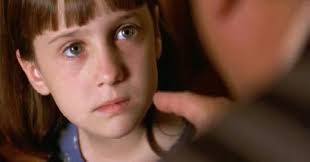
low angle shot - this camera shot looks up at the character and makes the character appear superior, powerful and threatening.

long shot - This shot is used to set the scene, also known as an establishing shot. Although it can also make a character look alone and isolated from everything else.
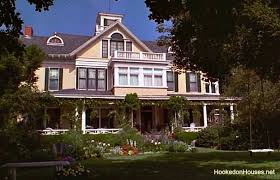
two shot - This shot contains two individuals and will often show their relationship through their body language/ facial expressions and will also sometimes show their conversation.
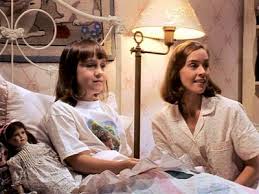
close-up shot - close-up shots are focused on a specific character, it is also a lot easier to see their emotions, i.e. the pain in the characters face.

aerial shot - this is a shot from above, where you can see a lot of the location - this shot can sometimes look as if it is being taken from a helicopter.

establishing shot - this is a shot that is normally held for a few seconds, this is a shot that lets the audience know the setting and what kind of theme they should be expecting.
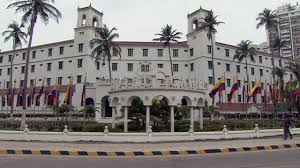
POV shot - this is a shot taken from another persons perspective, as if you are seeing through another person's eyes.
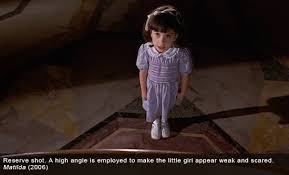
SRS shot - A shot reverse shot is a shot which is used to show two characters having a conversation, there are normally jump cuts between each shot.

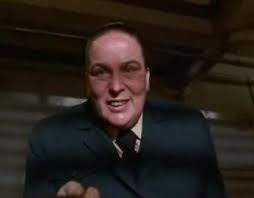
low angle shot - this camera shot looks up at the character and makes the character appear superior, powerful and threatening.

long shot - This shot is used to set the scene, also known as an establishing shot. Although it can also make a character look alone and isolated from everything else.

two shot - This shot contains two individuals and will often show their relationship through their body language/ facial expressions and will also sometimes show their conversation.

close-up shot - close-up shots are focused on a specific character, it is also a lot easier to see their emotions, i.e. the pain in the characters face.


establishing shot - this is a shot that is normally held for a few seconds, this is a shot that lets the audience know the setting and what kind of theme they should be expecting.

POV shot - this is a shot taken from another persons perspective, as if you are seeing through another person's eyes.

SRS shot - A shot reverse shot is a shot which is used to show two characters having a conversation, there are normally jump cuts between each shot.


Wednesday 9 October 2013
Narritive Theory
narrative explores the following conventions;
- Genre
- Character
- Form
- Time
the plot - the key events
the story - contains information that the audience hasn't been told about
narratemes - helps push the story to move forward; narrative function
Linear structure;
the story having a beginning, middle and end.
beginning - introduction to characters and initial story
middle - growth on the story, more events occur
end - closure
Open structure;
Doesn't have a definite ending or a sense of closure, includes cliffhangers, lets the audience interpret the story how they want to and think of their own ending so they are happy. "Inception" is a good example of a film with an open structure.
Closed structure;
This has a definite ending and provides a clear conclusion and sense of closure for the audience.
Circular structure;
Often referred to as a "non-linear structure". The narrative begins at the end events (with climax). It's very simple - begins and ends int he same place i.e. same setting, scenery and characters.
Narrative Theorists;
Vladamir Propp

He focused his narrative theory on characters from fairy tales, heroes and villains mainly. He stated that "narrative is driven by the characters using a set of narrative functions"
Roland Barthes

He believed that narrative was focused on a set of codes, these codes were the following; action; enigma; semic; symbolic and cultural.
Tzvetan Todarov

He believes that narrative is in the form of a loop. It begins at a state of equilibrium and then goes back to an altered and slightly different state of equilibrium.
Claude Levi-Stauss

Strauss says that narrative is the creation of constant conflicts of binary opposites ( binary opposites - category of semiotics; the study of signs; binary oppositions include the ideas; light and dark / moving and still) also conceptual such a love and hate.
the story having a beginning, middle and end.
beginning - introduction to characters and initial story
middle - growth on the story, more events occur
end - closure

He focused his narrative theory on characters from fairy tales, heroes and villains mainly. He stated that "narrative is driven by the characters using a set of narrative functions"

He believed that narrative was focused on a set of codes, these codes were the following; action; enigma; semic; symbolic and cultural.

He believes that narrative is in the form of a loop. It begins at a state of equilibrium and then goes back to an altered and slightly different state of equilibrium.

Strauss says that narrative is the creation of constant conflicts of binary opposites ( binary opposites - category of semiotics; the study of signs; binary oppositions include the ideas; light and dark / moving and still) also conceptual such a love and hate.
Narrative and Editing
Everything within media is done to create a meaning.
Narrative - the order of the story
Editing - when you put something in order to therefore create something meaningful
narrative structure - super-size me
- man buys meal
- begins to eat meal
- *five minutes later*
- seeing him eating the meal
- *ten minutes later*
- He is still eating the meal, but this time clip shows him begin to feel unwell
- *fifteen minutes later*
- another clip played of him eating
- *twenty-two minutes later*
- We see man with his head out of the car window
- We see a shot of his vomit on the ground
This is an example of narrative structure as it is creating a story for the audience. We are not 100% sure whether this was set up or not, we jump to conclusions all because of editing.
Editing constructs narrative out of footage
With a lot of footage, by editing, they can manipulate it in a certain way to create a specific narrative. By manipulating this, we are being told what to think, rather than questioning it ourselves, we are simply believing what we are being shown.
Screen wipe - putting different footage together to manipulate a situation
Editing constructs narrative out of footage
With a lot of footage, by editing, they can manipulate it in a certain way to create a specific narrative. By manipulating this, we are being told what to think, rather than questioning it ourselves, we are simply believing what we are being shown.
Screen wipe - putting different footage together to manipulate a situation
Hollywood studio system
During the 1920's films were recognised for a specific narrative structure; with a set of cinematic expressions. Musicals, western films and gangster films became a "classic" form of genre and some genres became guaranteed investment with a reliable return of profits. This then resulted in actors and actresses being specifically known for certain types of film.
Studio films were therefore known for their own style ("house style")The fall of the Hollywood studio system occurred on May 3rd 1948
Rise of the stars
- John Ford became well known for classic western films.
- James Cagney became well known as a gangster film actor.
- rise in television
- films became a tv series
- rapid growth of production
- being scouted for talent, charisma and glamour
- freelance
- dialogue coaches
- transformed film production
- became the face of a film - advertising - actresses faces on billboards etc
- gave them power for negotiating with directors/producers
Studio films were therefore known for their own style ("house style")The fall of the Hollywood studio system occurred on May 3rd 1948
Rise of the stars
Key concepts
Concept of genre:
It is argued that there isn't a definition for genre. As genre will always be changing the world and peoples views will always be developing. Hybrid genres and sub-genres also add to genre to make it more complex.
Genres are constantly changing, they are in a constant state of flux:
- familiar narrative
- mise-en scene
- style representation
- actors/actresses
some of these we expect to see in certain genres; this could be cross generic ( a feature in more than one film) we could possibly see the same settings from a thriller in a murder mystery.
Genre is the crucial way of working through fears and myths;
- variation
- resolution
- repetition
Genre can also reassure the audience for example the evil villain in a film being punished at the end of the film can make the audience feel more comfortable will the way the film had ended and wouldn't be angry at the story-line.
some of these we expect to see in certain genres; this could be cross generic ( a feature in more than one film) we could possibly see the same settings from a thriller in a murder mystery.
- variation
- resolution
- repetition
Genre can also reassure the audience for example the evil villain in a film being punished at the end of the film can make the audience feel more comfortable will the way the film had ended and wouldn't be angry at the story-line.
How can genre aid me in relation to my brief?
Genre is the basis for any film or clip. It defines what the media is, whether it is a horror or a love story. Genre will determine whether the film appeals to the audience or not. Within genre, we have hybrid genres; this is the mixing of two genres into one, for example a rom-com (romantic/comedy). Genre can also alter how the film is edited, the audio, planned and produced, this could then potentially change the film completely. Sub-genres are different forms of the same genre. If I chose that in my 2 minute opening clip that the genre was going to thriller then I would use the following components;
- low lighting
- low camera angles
- dark costumes
- tense music
- quick cuts
What will i be assessed on?
I will be assessed on the following components;
Research;This will include looking at different sources to find existing film features and genres so I am able to get ideas for my project. I will need to look at camera angles and find out what effects camera angles have on an audience and a film. I will also look at the representation of a film for example, body language and facial expressions, again what effects this has on the film and the audience it is being presented to. I am going to start by looking at film trailers to see how they have edited the film, into a smaller piece of film to make it attractive to the audience and engage the audience to want to go and see it.
Filming;To film; we will be working in groups. We will put all of our planning and research together to decide on a final group idea for the 2 minute opening of our film. We will have to take into account camera angles, music and costume, lighting etc.
Planning;My strategy for planning is to brain storm all of my ideas but keep them colour coordinated because it is easier for me to notice the sections in my planning. Then when we are placed into our groups I will find it easy to explain my ideas to the group and put my planning towards the final idea of our 2 minute opening of our film.
Post production;This is the editing of all of the footage we have shot as our group; including adding a sound track, music, extra sound effects. This will also include us re-arranging the footage into a sequence that works so we have the best opening for the film. We need to keep it engaging.
- Research
- Filming
- Planning
- Post production
Filming;To film; we will be working in groups. We will put all of our planning and research together to decide on a final group idea for the 2 minute opening of our film. We will have to take into account camera angles, music and costume, lighting etc.
Planning;My strategy for planning is to brain storm all of my ideas but keep them colour coordinated because it is easier for me to notice the sections in my planning. Then when we are placed into our groups I will find it easy to explain my ideas to the group and put my planning towards the final idea of our 2 minute opening of our film.
Post production;This is the editing of all of the footage we have shot as our group; including adding a sound track, music, extra sound effects. This will also include us re-arranging the footage into a sequence that works so we have the best opening for the film. We need to keep it engaging.
Main Task
The main coursework task is to create the titles and opening of a new fiction film, to last a maximum of two minutes. All video and audio must be original, produced by the candidate(s), with the exception of music or audio effects from a copyright-free source.
Subscribe to:
Posts (Atom)